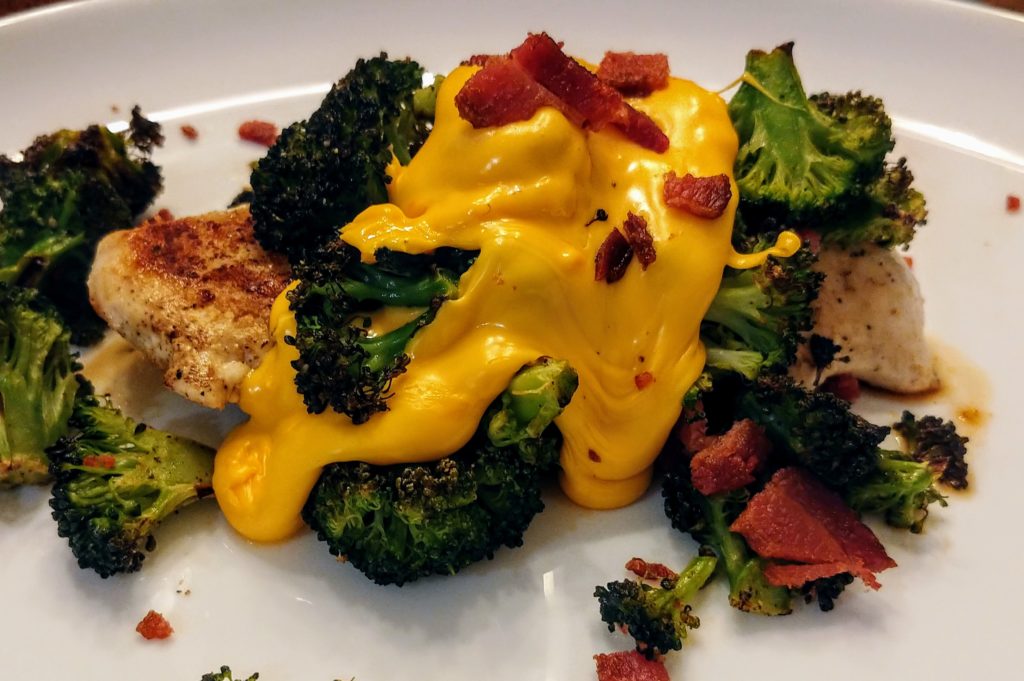If you’re considering trying the keto diet, you probably have a lot of questions. This quick and easy to understand Keto diet for beginners guide will give you a good summary of what ketogenic diet is, how it works and if it is the right choice for you. We even have a bunch of easy and delicious keto recipes too!
You’re probably considering going keto because you’ve already heard of what this low carb, high fat way of eating has done for a friend or family member. But did you know that there’s way more to the keto diet than just quick weight loss? Many believers are convinced that there are a number of health issues and ailments that can be improved, or even reversed, by following a ketogenic diet. Really!
For instance, did you know that the keto diet was originally developed to treat epilepsy in children? It’s true! Studies show about 40-50% of epileptic children who start a ketogenic diet have up to 50% fewer seizures. There is also evidence to suggest that the keto diet can be beneficial for people with type 2 diabetes, by helping to control their blood glucose levels.
So, let’s get into it – what is the keto diet and how can it help you?
What is the Keto Diet?
The ketogenic, or “keto” diet is a low carbohydrate, high fat diet that emphasizes fat as a source of energy. It has been used for centuries to treat certain medical conditions but has really gained traction in recent years as a popular way to lose weight quickly.
Unlike other low-carb diets, which usually focus on protein, the Keto diet focuses on fat instead. By restricting your carb intake, you lose weight by essentially forcing your body to burn fat for fuel instead of carbohydrates.
When your body goes into this fat burning state, it’s called ketosis. Maintaining ketosis is your main goal while adopting the keto lifestyle – which can lead to weight loss, as well as improved mental clarity, increased energy levels, and other benefits.
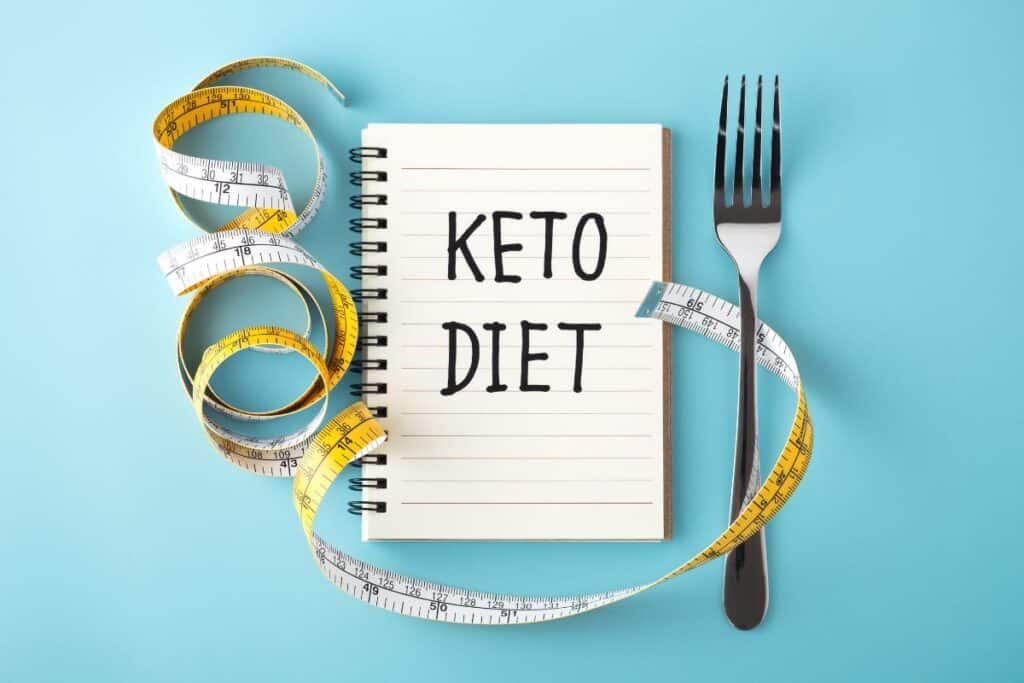
For most people, the best way to lose weight and improve health is to make small, manageable changes to their diet and lifestyle that they can commit to long term. Keto seems to fit that bill since you are mainly making specific food choices which is easier than trying to stick to a meal plan.
Before starting any new diet, it is important to speak with your doctor or a registered dietitian to ensure that it is safe for you. The long-term effects of the Keto diet are not yet known, and it is not suitable for everyone.
Food to avoid on Keto
To help you reach these macronutrient goals, you’ll need to avoid foods like bread, pasta, most fruits, beans, sugars, whole grains and starchy vegetables. This is just a quick general list, we’ll go into more detail in a separate post.
Foods to Eat on Keto
Instead, focus on eating healthy fats and protein like meat, fish, eggs, full-fat dairy products, nuts and seeds, avocados, olive oil, and butter. Again, just a quick list to give you an example of some foods that are on the keto-friendly list: berries (like raspberries, strawberries, blackberries), bell peppers, celery, cucumbers, broccoli, spinach, cauliflower, lettuce, zucchini and tomatoes.
What are macros?
The term Macros is short for macronutrients. Macronutrients are the three nutrients that make up the bulk of our diet: carbohydrates, proteins, and fats.
Each of these nutrients provides us with energy, but they do so in different ways. Carbs are broken down into glucose, which is used for energy; protein is used to repair and build tissue; and fat is used for long-term energy storage.
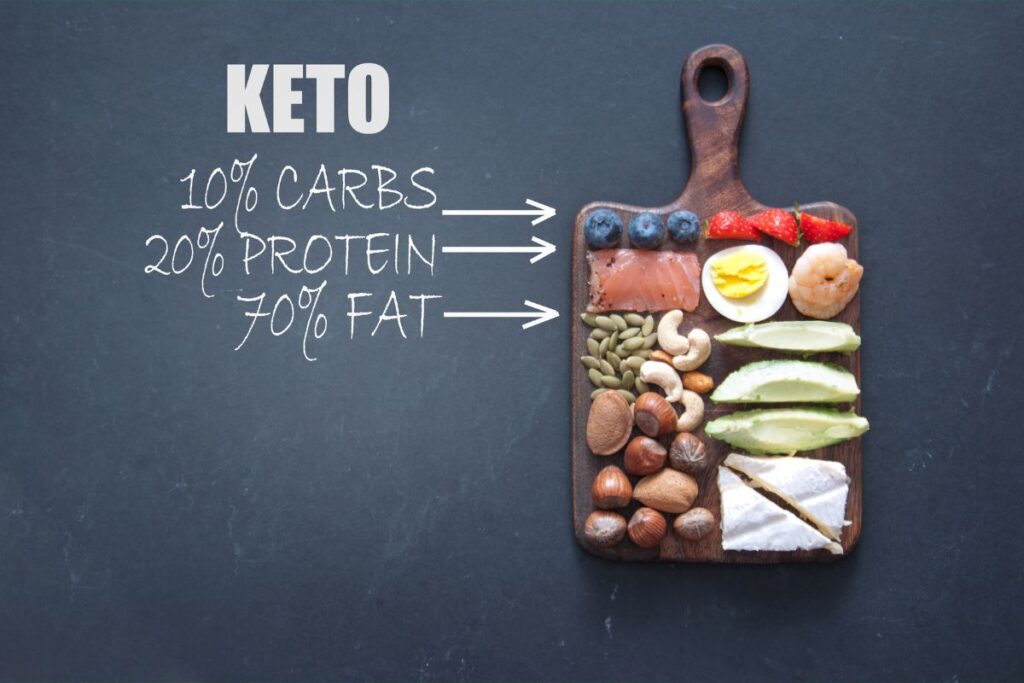
On a keto diet, your carb intake will be very low, so you’ll get most of your energy from fat. This means that your macros will be mostly fat, with some protein and very few carbs.
Generally, typical keto macro ratios are:
Fat: 70%-80%
Protein: 10%-20%
Carbs: 5%-10%
When following a 2000-calorie diet, you should aim to consume around 165 grams of fat, 40 grams of carbohydrates, and 75 grams of protein daily.
What is Ketosis?
Ketosis is a metabolic state in which your body burns fat for fuel instead of carbohydrates. When you eat a lot of carbs, your body converts them into glucose, which is then used for energy.
However, when you cut back on carbs, your body must find another source of energy. This is where fat comes in.
When there aren’t enough carbs available, your body will begin to break down stored fat into molecules called ketones and use them for energy. This process is known as ketogenesis.
How do I get into ketosis?
Getting into ketosis is essential to following the keto diet and reaping its benefits. But what is it and how do you get there?
Ketosis can be induced by fasting or following a very low-carbohydrate diet. In contrast, a high-carbohydrate diet prevents ketosis from occurring. Although ketosis is often associated with diabetic ketoacidosis, the two are different metabolic states.
Diabetic ketoacidosis is a serious medical condition that occurs when there is an accumulation of ketones in the blood.
In contrast, ketosis is a safe and healthy metabolic state that has many benefits. Some of these benefits include weight loss, improved mental clarity, and increased energy levels.
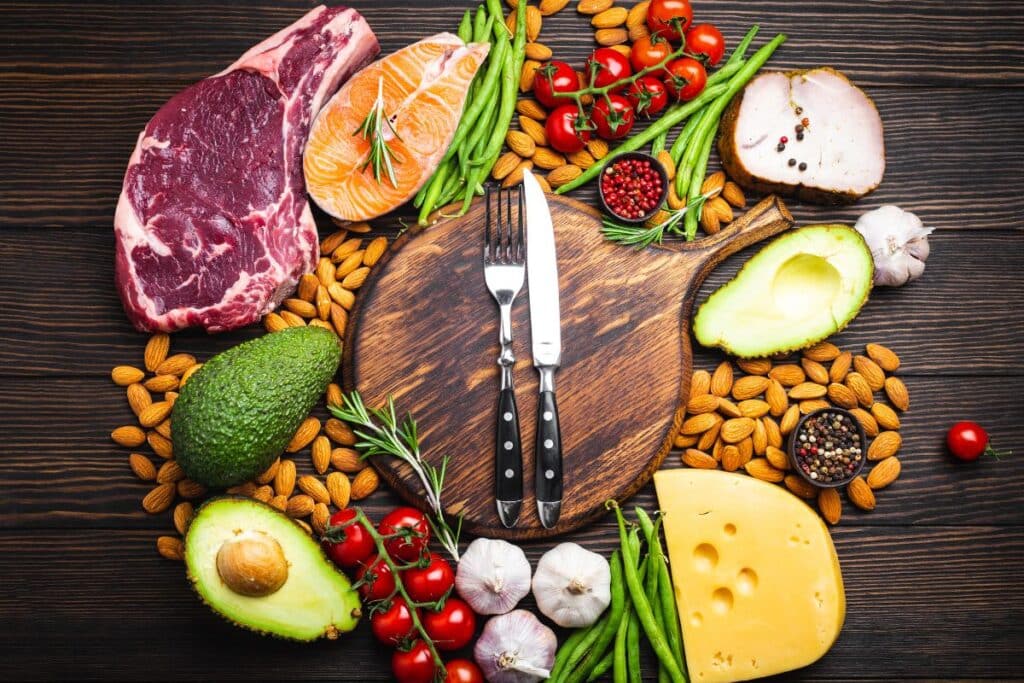
In order to reach ketosis, you need to consume a very low-carb, high-fat diet and restrict your intake of protein.
There are several ways to do this, but one of the most common is the standard ketogenic diet (SKD). The SKD requires that you eat less than 50 grams of carbs per day and get at least 70 percent of your calories from fat.
How long does it take to get into ketosis?
It usually takes 1-2 weeks of following a keto diet before your body enters ketosis. However, this can vary depending on your individual metabolism, how much carbs you’re consuming, and other factors.
To speed up the process, you can try intermittent fasting or exogenous ketone supplements. Intermittent fasting is when you cycle between periods of eating and fasting. This helps your body burn through its glycogen stores faster so that you can enter ketosis more quickly.
Exogenous ketones are supplements that contain ketones that your body can use for energy. These can help you get into ketosis if you’re struggling to do so on your own.
How can I tell if I am in ketosis?
There are a few ways to tell if you’re in ketosis. One of the most common is by using a keto test strip. You can purchase them online and these strips change color to indicate the presence of ketones in your urine.
Another way to tell if you’re in ketosis is by tracking your ketone levels using a blood ketone meter. This device measures the amount of ketones in your blood and can give you an accurate indication of whether or not you’re in ketosis.
Other signs that you’re in ketosis include increased energy levels, decreased appetite, and improved mental clarity.
If you want to confirm that you’re in ketosis, Or you can also ask your doctor to test your blood for ketones.
What will kick me out of ketosis?
There are a few things that can kick you out of ketosis. The most common is eating too many carbohydrates.
If you eat more than 50 grams of carbs per day, your body will start to convert them into glucose and use that for energy instead of ketones.
Other things that can kick you out of ketosis include stress, lack of sleep, and exercise. These can all cause your body to release cortisol, which can lead to increased blood sugar levels and decreased ketone production.
To avoid this, make sure to get plenty of rest and manage your stress levels. You can also increase your fat intake if you find that you’re not getting enough energy from your current macros.
What are the Benefits of the Keto Diet?
Weight Loss: The keto diet can help you lose weight by forcing your body to burn fat for fuel instead of carbohydrates.
Improved Mental Clarity: When your body is in ketosis, it produces ketones, which have been shown to improve mental clarity.
Increased Energy Levels: The keto diet can help you increase your energy levels by giving your body an alternative source of fuel (fat) to burn.
Other potential benefits include improved cholesterol levels, reduced inflammation, and decreased blood sugar levels. However, more research is needed to confirm these potential benefits.
What are the risks of the Keto Diet?
The Keto diet may not be suitable for everyone and there are some potential risks associated with following this eating plan.
Some of the potential risks include:
Kidney stones: The Keto diet can increase your risk of developing kidney stones because it causes your body to excrete more water and electrolytes.
Low blood sugar: If you take medication for diabetes, following a Keto diet may cause your blood sugar to drop too low.
Nutrient deficiencies: Due to the restrictive nature of the Keto diet, you may not get enough vitamins, minerals, and fiber if you follow this eating plan for an extended period of time.
Digestive issues: The Keto diet can cause digestive issues like constipation and diarrhea in some people.
Disrupted sleep: The Keto diet may disrupt your sleep patterns due to the high fat intake, which can cause insomnia.
If you’re considering following the Keto diet, it’s important to speak with your doctor first to discuss whether or not this eating plan is right for you.
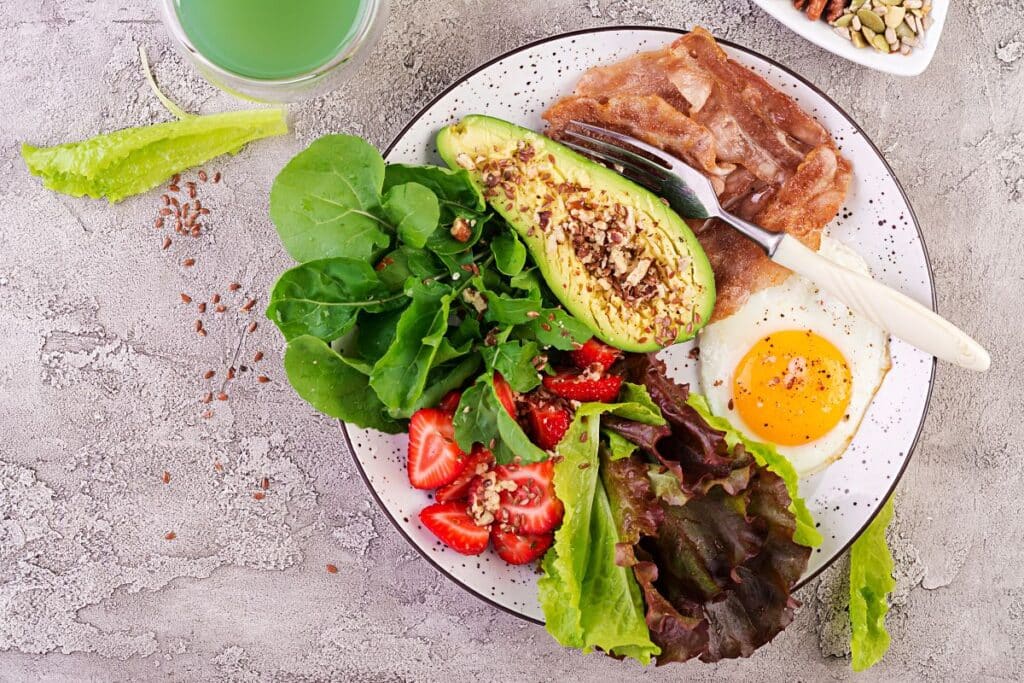
Keto Friendly Recipes
The key to being successful on the Keto diet is to find recipes that fit your macros and your specific goals. You’ll want to have a nice variety of options to choose from, because it’s easy to get stuck in the same cycle and feel trapped with your food options. Luckily, there are plenty of delicious Keto recipes that you can make at home.
Some of our favorite Keto friendly recipes include:
- This Guilt Free Chicken Crust Pizza Recipe is a Game Changer
- Classic Low Carb Wedge Salad Recipe
- Egg Roll in a Bowl [Low Carb]
- Creamy Spinach Dip Smothered Chicken
- Low Carb Almond Flour Bread Recipe
- Loaded Baked Low Carb Chicken Recipe
- Easy Pickled Banana Pepper Recipe
- Keto Jalapeno Poppers with Sausage
- Bacon Wrapped Mushrooms -Paleo and Keto Friendly!
- Keto Bacon and Spinach Egg Bake with Yogurt Aioli
- Best Options for Keto Travel Snacks
- Creepy Spider Halloween Deviled Eggs
- The Ultimate Cheesy Cauliflower Recipe
- The BEST Baked Garlic Spinach Chips Recipe



